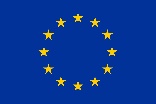
Evaluating Forest Fire and Drought Risk by CESEFOR
As citizens, it's important to understand the challenges our forests face and the efforts being made to mitigate them. In this post, we dive into the remarkable work conducted by CESEFOR as part of the ONEforest project. Their research focuses on assessing forest vulnerability to fires and droughts, shedding light on crucial indicators and vulnerability maps. Let's explore their findings and their potential impact on our forests.
CESEFOR's meticulous research involved an in-depth analysis of the factors contributing to forest fires. Using advanced methodologies, they collected extensive climatic and orographic data, along with satellite images. Based on this information, CESEFOR calculated the Territorial Fire Risk Index (TFRI) for the region of Castilla y León, Spain.
The TFRI was derived from two key indices: the Orographic index and the Combustibility Index. The Orographic index, obtained through slope analysis, highlights areas prone to vertical fire propagation. The Combustibility Index takes into account various factors such as vegetation type, water content, tissue characteristics, and distribution. These indices were combined and categorized on a scale of 1-5, with corresponding colors on the maps indicating the level of fire risk. Red colors signify a high risk, while greener shades indicate a lower risk of fire.
CESEFOR's analysis classified vegetation types based on combustibility models suggested by Rothermel. These models, grouped into categories considering combustibility, spatial distribution, vegetation continuity, and fuel load, provided valuable insights into assessing the risk of fires in the region.
Understanding Fire Behavior
In addition to evaluating fire risk, CESEFOR has been working on developing a Fire Risk Propagation Index for the Case Study Site in Soria (Castilla y León, Spain). This index aims to simulate fire behavior characteristics, including flame length, intensity, and speed of propagation. By considering fuel type, humidity, and weather conditions, CESEFOR's model will provide a comprehensive understanding of fire dynamics. This ongoing research will continue until July 2023, aiding in effective fire management strategies.
Assessing Drought Conditions
CESEFOR's work extends beyond fire risk assessment. They are also actively involved in calculating the Drought Index, known as the Vegetation Condition Index (VCI). This index compares current NDVI values (Normalized Difference Vegetation Index) with previous values, offering valuable insights into drought conditions. As a proposal, CESEFOR plans to calculate VCI by season for five years until Month 28 (September 2023) for the entire Castilla y León region. Additionally, they will calculate VCI by month for two specific plots in the experimental site in Soria. These assessments will contribute to our understanding of the impact of droughts on forest health and guide appropriate mitigation strategies.
Valuable insights
The work undertaken by CESEFOR as part of the ONEforest project is instrumental in assessing forest vulnerability to fires and droughts. Their findings provide valuable insights into fire risk, fire behavior, and drought conditions in the region of Castilla y León but also in other Mediterranean regions. By understanding these dynamics, we can work towards implementing effective measures to protect and sustain our forests. CESEFOR's research plays a crucial role in promoting the long-term health and resilience of our precious natural resources.
Remember, as citizens, we all have a role to play in supporting sustainable forest management and safeguarding our environment for future generations.
Stay informed, stay engaged, and let's protect our forests together!


